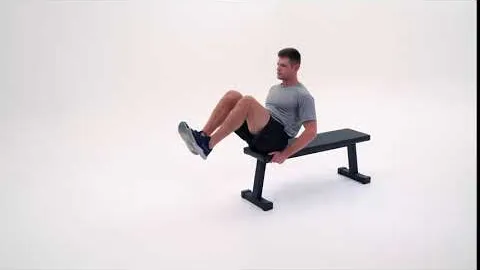

If you're looking to target your abdominal muscles with a challenging and effective exercise, then the bench reverse crunch is worth considering. This exercise specifically focuses on your lower abs, helping you to achieve a stronger core and overall improved posture. In this guide, we will take an in-depth look at how to perform the bench reverse crunch correctly, its benefits, common mistakes to avoid, and modifications for beginners or those with certain limitations.
The bench reverse crunch is a bodyweight exercise that primarily targets the rectus abdominis, also known as the lower abs. It involves lying on your back on a flat bench or mat with your legs extended and lifting your hips off the bench using your lower abdominal muscles. This exercise is highly effective for engaging and strengthening the lower abs, as well as improving stability and control in the core.
To ensure you are performing the bench reverse crunch correctly, follow these step-by-step instructions:
Incorporating the bench reverse crunch exercise into your fitness routine can provide a variety of benefits, including:
To maximize the effectiveness of the bench reverse crunch exercise and prevent injury, it's crucial to avoid the following common mistakes:
If you're new to the bench reverse crunch exercise or have certain limitations, consider these modifications:
The bench reverse crunch exercise is a highly effective movement for targeting the lower abs and improving core stability. When performed correctly and with proper form, it can lead to increased strength, reduced lower back pain, and enhanced flexibility. Remember to avoid common mistakes, modify the exercise if needed, and gradually progress your repetitions and sets to challenge your abdominal muscles further. Incorporate the bench reverse crunch exercise into your fitness routine for a stronger core and improved overall fitness.
If you're looking for a gym, fitness club or yoga studio, you've come to the right place.
You can find information about gyms in your area. Browse catalog of gyms and find gyms with classes which are you looking for.
On gym page you can find simple information like address, phone or website. You can find list of available classes. You can check availability of personal training or small group classes. On place page you can also see information about open hours.
You can find gyms near you with amenities, courts, studios and equipments.
Use our map to find gym at your city or district.
In Gym Navigator you can find list of exercises with movies for many body parts.
You can browse exercises catalog and find exercises the best of you.
You can also find exercises grouped into workout plans, which you can use to improve you body. Each routine show you exercises one by one and give you possibility to count you progress and count down rest time.